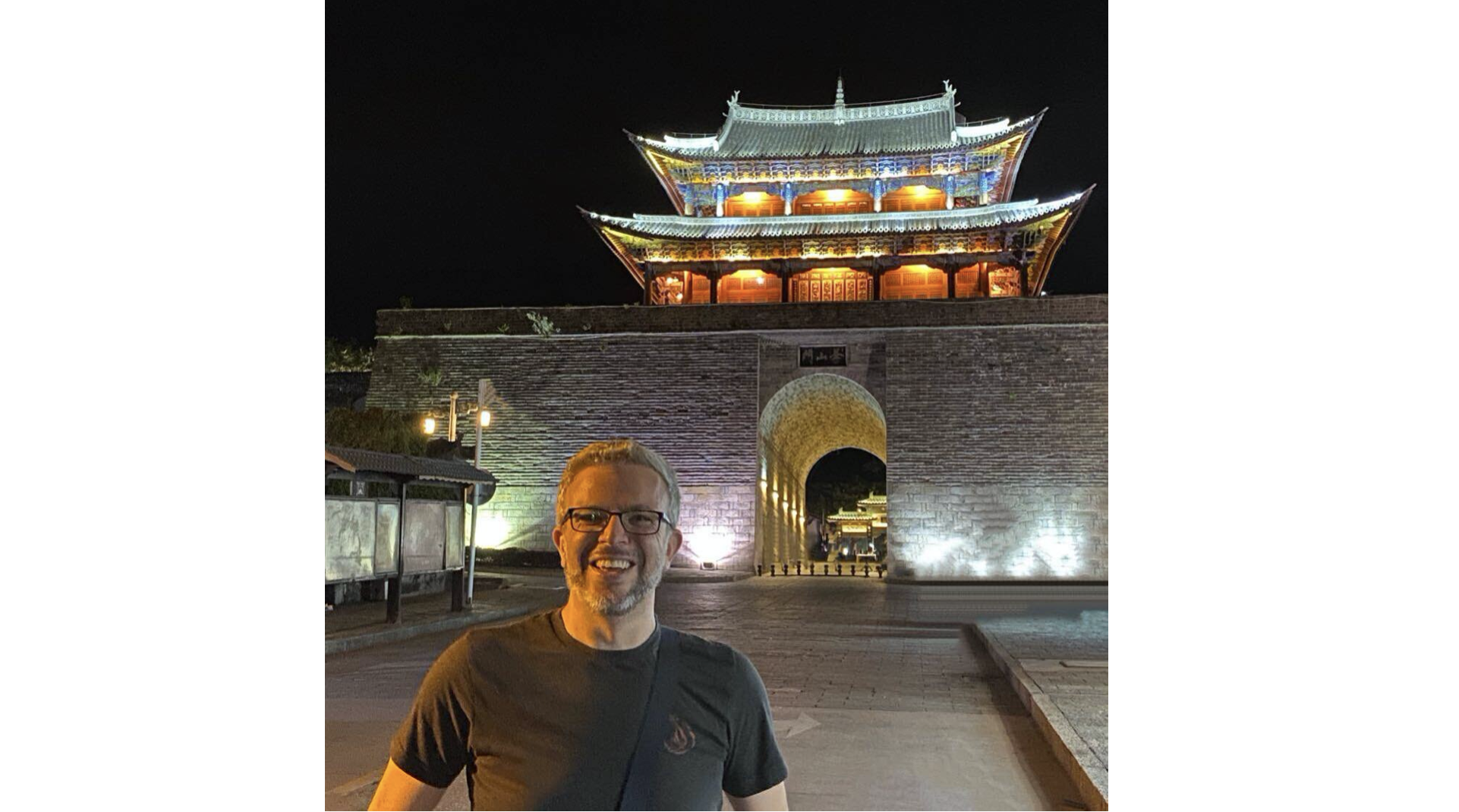The Yin and Yang of Shangri-La
“Shangri-La” is two things.
One is a mythical Himalayan utopia invented by a British author in the 1930s, designed to evoke the exoticism of the Orient.
The other is here, a real place in the Tibetan part of Yunnan province. It was formerly called Zhōngdiàn (中甸) and its name was changed to Shangri-La in 2014 to promote tourism.
I’m not sure why this was needed, seeing as it is home to Sungtseling: a Buddhist monastery built in 1679, and a cousin to the Potala Palace in Lhasa.
For the Instagram version, see here.
For the Facebook version, see here.
Ambivalence in Yunnan
Good news: There are relatively few cases of COVID-19 in China. 😃
Bad news: the borders are still closed for returning foreigners, so we‘re basically trapped here. ☹️
Good news: China is a big place, so we were able to take a 4-hour flight from Shanghai and still remain within the country. 😃
Bad news: the weather forecast for the next week here in Yunnan Province is solid rain. ☹️
Good news: at least it was dry enough to take this photo in Dali old town. 😃☹️😃☹️🤯
My First Post-Lockdown Haircut
Life in Shanghai is slowly returning to something nearer “normal”. I just had my first haircut in 6 weeks, in a salon that was allowed to accept 3 customers at a time, for quick 30-minute cuts.
Meanwhile, the rest of the world is panic-buying toilet paper and stealing hand-sanitiser from hospitals. 🤷♂️
For the Instagram version, see here.
For the Facebook version, see here.
Good News, It’s Severe Inconvenience and Economic Injury
THE POSITIVE NEWS. It has been around 7 weeks since the coronavirus came to Shanghai, and now we’re approaching something nearer “normal”. People are slowly being allowed to return back from their hometowns, and return to work.
THE REALITY CHECK. This has only been possible because of strict adherence to the rules of social distancing. No panicking, but at the same time, no cutting corners. A period of severe inconvenience and economic injury has been a small price to pay to be in this situation today.
A HOPEFUL CONCLUSION? The world can point to China’s relative lack of openness and directness for mishandling the outbreak. And China can point to the world’s relative lack of competence and discipline for mishandling its containment. I’ve given up on the hope that global threats like this will force all sides to transcend their hard-wired tribal mentality. But my remaining hope is that at least both sides can learn from each other’s strengths and mitigate their weaknesses.
A Fundamental Aspect of Life in China
The Coronavirus has brought China’s full-speed economy temporarily screeching to a halt. But it hasn’t changed one fundamental aspect of modern life in China:
The adaptability of its people.
For the LinkedIn version, see here.
Small Businesses in a Crisis
In a crisis, small businesses face the biggest challenges. But also the biggest opportunities.
I remember co-founding my headhunting company in Singapore in the middle of the global financial crisis in 2008. It was tough, no question about it. But while all of our larger competitors were turning inward and focusing on damage control, we were small and nimble enough to do the opposite. We continually reached out to our external stakeholders. We treated them as human beings, showing genuine solidarity and compassion. And while we hemorrhaged cash along with everyone else, we also built a level of trust and goodwill that endured for many years into the recovery.
Today, I received this surprise care package from Jessica Gleeson at the skincare company BrighterBeauty. It includes skin protection, face masks, protective gloves, home-baked cookies and some light reading.
That’s how you do it.
For the LinkedIn version, see here.
For the Instagram version, see here.
Mindset is Everything
The situation in China continues to be affected by strict policies of self-confinement. In Shanghai today, getting into most buildings and residential estates requires you to wear a mask, and submit yourself to temperature checks. This photo was taken by The New York Times contributor Rebecca Kanthor at the end of my 小区 lane in Shanghai, where the gates have now been locked, and only residents can enter and exit.
As brutal as this sounds, I don’t feel under siege. And as inconvenient as these restrictions are, I don’t find them stressful. I find them comforting. There’s a stoicism in my community of Chinese neighbours that is very calming. And everyday changes to regulations are being superbly well-organised and communicated.
It makes me feel that China and the Chinese people are on top of this. And it makes me feel that mindset is everything.
For the LinkedIn version, see here.
For the Instagram version, see here.
For the Facebook version, see here.
The Humanity of Shanghai
And so we’re back in Shanghai.
I just walked down our street to buy some milk, and as expected the place was deserted. But our 85-year-old neighbour climbed up the steps to our apartment to welcome us home; I had a lovely conversation with the street cleaner about whether I knew who had lost a glove she had found; and the lady at the grocery store, who never usually gives me more than a grimace, today flashed me a smile. (Well, I guessed it was a smile from behind her mask. Maybe it was just a larger grimace.)
This is my first morning back since returning from the Chinese New Year holidays. But already I am feeling the humanity of Shanghai like never before. Here’s hoping that we all don’t forget this too quickly once things return to normal.
Biscuits For Everyone!
One of these is a photo from today in Niseko. It’s my first time skiing in 4 years.
The second is a video from 4 years ago. I was waking up from heavy sedation after ACL reconstruction surgery, following a dumb accident that happened the last time I went skiing.
It’s good to be back... BISCUITS FOR EVERYONE!!!
Who's That Boy?
I first stepped foot in Asia exactly 20 years ago, for a one-year adventure teaching English in Western Japan. The boy in this photo is still on his adventure.
私はちょうど20年前にアジアに足を踏み入れました,西日本で英語を教える1年間の冒険でした。この写真の中の少年はまだ冒険中です。
20年前,我第一次踏上亚洲,在日本西部进行为期一年的英语教学。这张照片中的男孩还在冒险。
Mandarin Official
Learning a new language in your 40s is a humbling experience. So it’s nice to at least get a certificate out of it.
在40多岁时学习一门新语言是一种丢脸的体验。 所以获得证书是太好了。
For the LinkedIn version, see here.
Did That Really Happen?
Today marks exactly 10 years since I somehow completed the RacingthePlanet 250km ultra-marathon through the deserts of Namibia. With a finishing time of 46 hours, 7 minutes and 35 seconds, I came 50th out of over 200 competitors.
Since then I have spent the last decade celebrating by lying on the couch eating pies.
For the Facebook version, see here.
For the Instagram version, see here.
A Photo of Mother and Son
A photo of mother and son back in 1979.
I was 2, she was 32.
We were... Thirty years apart.
She died on this day in 1989, she was 42.
The same age I’ll be this year.
It’s been... Thirty years apart.
For the Facebook version, see here.
Too Many Commas
I just learnt that there are two types of comma in Chinese:
逗号 is the regular comma ( ,) and
顿号 is the back-sloping comma ( 、).
The normal comma is used for pauses in speech; the back-sloping comma is used for the slightly shorter pauses you make when listing two or more things.
Here’s an example of their usage, with the English explanation below:
Here’s how this example would look in English:
“Past、present、future,up and down、left and right,China and foreign countries are all mutually connected、mutually influential、mutually restrictive.”
Oh, and the semicolon is used in the same way as English, to signify a shift between clauses. So in order of longest pause to shortest pause, it goes as follows:
。
;
,
、
For the Instagram version, see here.








































